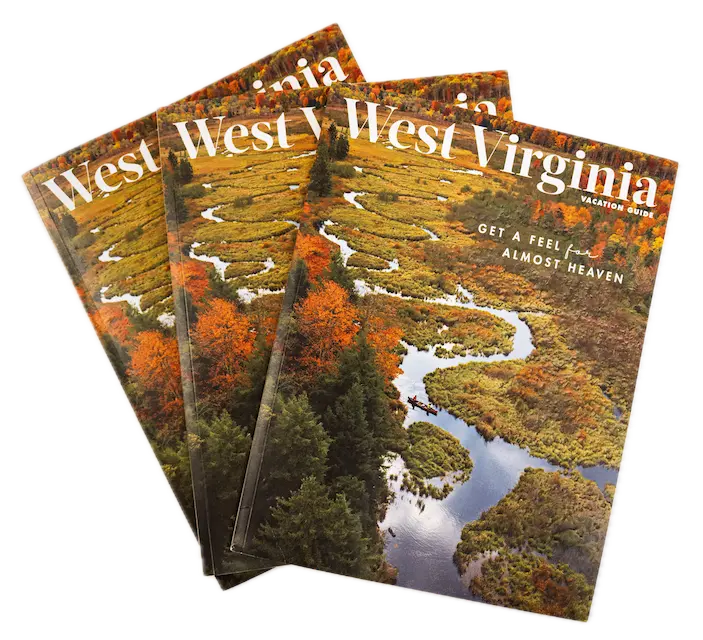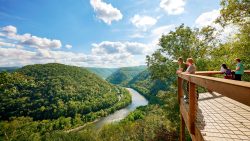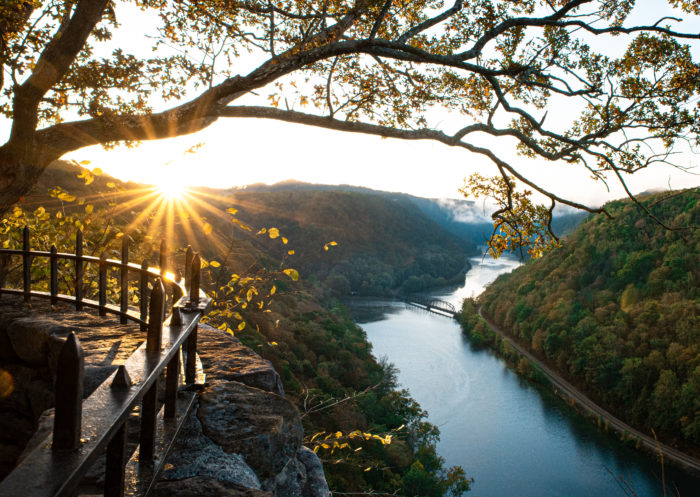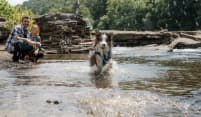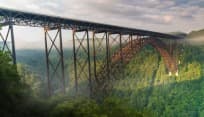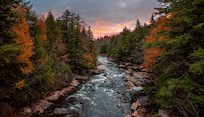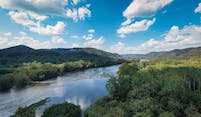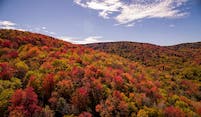Stop me before I volunteer again: the story of Gene and Maura Kistler
Maura and Gene Kistler and Kenny Parker spent a day on a pontoon boat on West Virginia’s Summersville Lake last August, but the day was not for relaxing.
Their boat was one of 13 lashed together in a barge, piled high with rock climbers for a deep-water solo climbing competition that Parker and the Kistlers organized. In deep-water soloing, you climb up rock faces high above the water’s surface with no ropes to catch you. When climbers fall— and they fell a lot that day— SPLASH!
The event, PsicoRoc, is the only climbing competition of its type on real stone in the United States, ever.
But the journey from concept to event was not an easy one. Deep-water soloing is normally illegal at 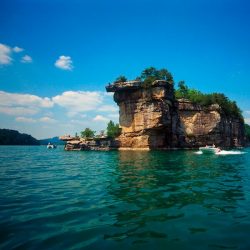 Summersville Lake, so it was a long process to get the proper permits. Then, in the month prior, people backed out, volunteers left town and boats broke down. Despite all that, sponsors spent immense amounts of money, and sent their best athletes to compete. In all, 93 people on the lake needed to be fed, watered and shuttled to the bathroom while elite athletes climbed up to 55 feet with a small floating city looking on and cheering. It was, as they say in the volunteer game, insane.
Summersville Lake, so it was a long process to get the proper permits. Then, in the month prior, people backed out, volunteers left town and boats broke down. Despite all that, sponsors spent immense amounts of money, and sent their best athletes to compete. In all, 93 people on the lake needed to be fed, watered and shuttled to the bathroom while elite athletes climbed up to 55 feet with a small floating city looking on and cheering. It was, as they say in the volunteer game, insane.
It was also just one more in a line of standard-setting events the Kistlers and Parker have spearheaded for the New River Alliance of Climbers, or NRAC— a line that stretches back to the first New River Climbers’ Rendezvous in 2002.
NRAC barely exists on paper. It has no official members, but it does have an 8-seat board of directors who are also its main volunteers. And yet, year after year, NRAC’s core team of Parker and the Kistlers— who are, not coincidentally, also co-owners of one of the last true climbing gear shops in America, Water Stone Outdoors— pull together a diverse group of community stakeholders to stage events that make seasoned planners scratch their heads in wonderment.
But things weren’t always like that.
“I remember walking by some volunteers so long ago 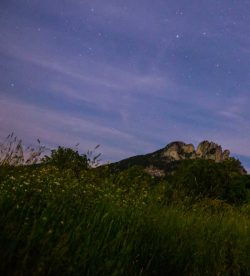 at Seneca Rocks and thinking, ‘Who would give up a day of rock climbing for this? What’s wrong with those people?’ But your consciousness has to be raised at some point,” Maura said. “My lack of awareness was a disconnect between me loving rock climbing at Seneca and me taking a lousy hour out of my day to give back to the area.”
at Seneca Rocks and thinking, ‘Who would give up a day of rock climbing for this? What’s wrong with those people?’ But your consciousness has to be raised at some point,” Maura said. “My lack of awareness was a disconnect between me loving rock climbing at Seneca and me taking a lousy hour out of my day to give back to the area.”
When she partnered with her husband and Parker to open Water Stone Outdoors in Fayetteville, a stone’s throw from the New River Gorge, everything changed.
“It was the New River Climbers’ Rendezvous that started us off,” Maura said. “But our inexperience was apparent in all the mistakes we made early on. I mean no water at the venue?! We were clueless.”
That cluelessness did not last long. The Rendezvous showed them the power of events. They began to realize that it could improve the climbing atmosphere of the New River Gorge, one of the world’s top destination crags, build community and in the process grow their business. Water Stone had connections to potential event sponsors, because the shop was a customer to those sponsors. Patagonia, Black Diamond, Mountain Hardwear and more brands took ownership of their pieces of the Rendezvous, and soon it epitomized what a climber event could do nationwide.
And yet, “I wouldn’t want to be just a random non-profit, trying to get these sponsors on board,” Maura said.
Kenny said the relationship goes both ways.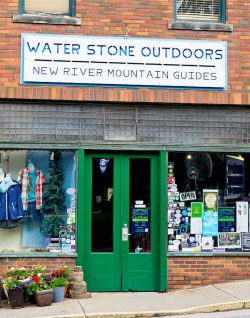
“There’s never been much separation between NRAC and the shop,” Kenny said. “From the shop’s perspective, it’s like, ‘What’s the best marketing we could do?’ And that would be it. From NRAC’s perspective, the shop is the vehicle that allows us to do what we need to do to ensure climbing at the New River Gorge continues to be as fantastic as it always has been, with safer anchors, better trails, better events.”
Maura agreed. “If a brick-and-mortar shop isn’t actively, constantly trying to build community and fun and psyche, then I don’t know how you survive,” she said. “This is the old-school model. The climbing shop used to be the hub. I grew up with the Gendarme at Seneca Rocks. That was the center of everything, and I would never have bought gear from anybody but them. I think people are more hungry now than ever before for that kind of allegiance.”
That nexus between for-profit and nonprofit interests is the very foundation of one of the most vibrant climbing communities in America— one that consistently pushes the boundaries of a what a grassroots organization can do.
PsicoRoc may have been a one-time-only event, but knowing their track record, these 3 will probably be working on something else new and exciting soon.
“Yeah, stop me before I volunteer again,” Maura joked.
We don’t think anyone could!
This post was last updated on December 26, 2024
